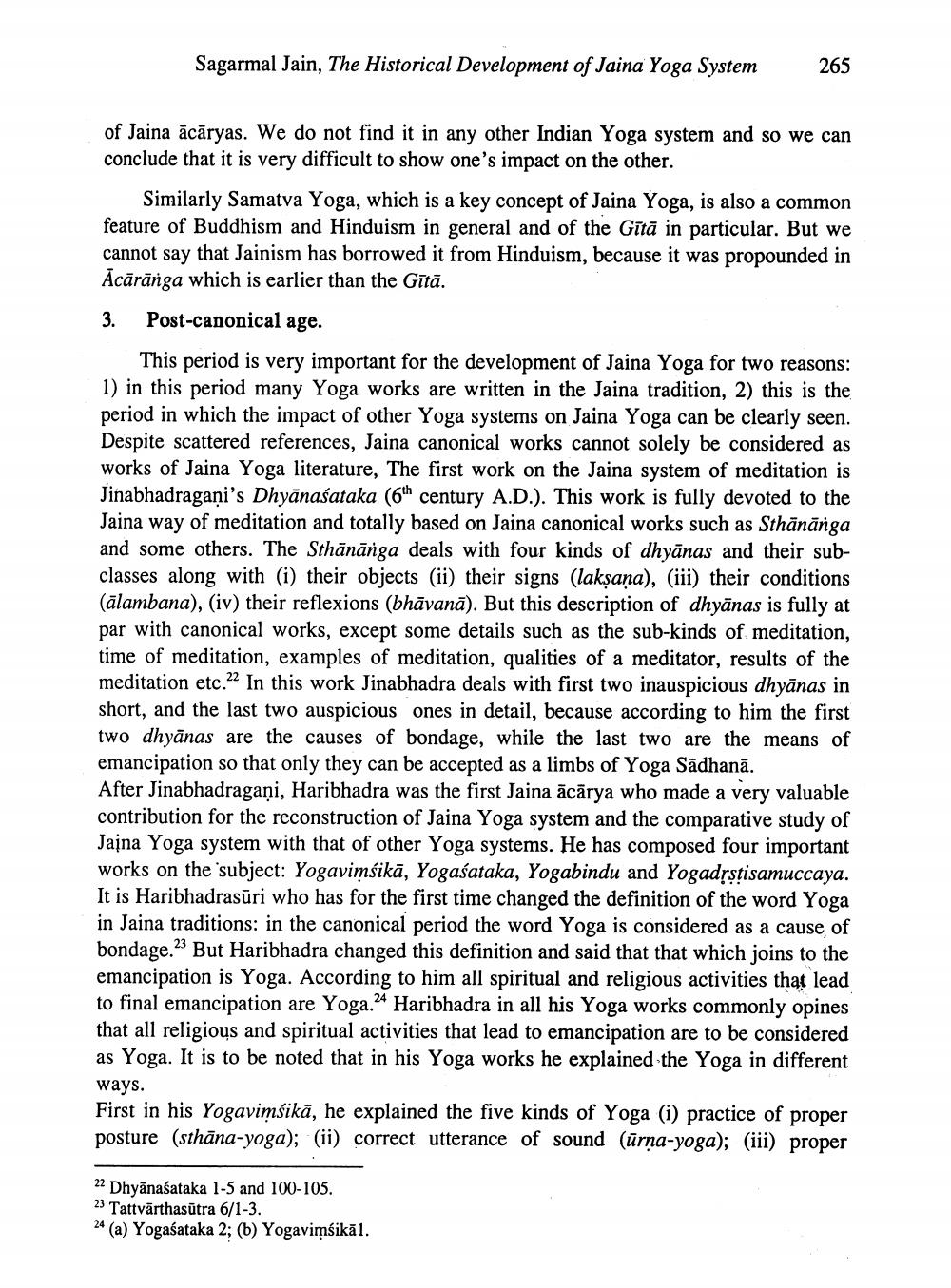________________
Sagarmal Jain, The Historical Development of Jaina Yoga System
of Jaina ācāryas. We do not find it in any other Indian Yoga system and so we can conclude that it is very difficult to show one's impact on the other.
3.
265
Similarly Samatva Yoga, which is a key concept of Jaina Yoga, is also a common feature of Buddhism and Hinduism in general and of the Gita in particular. But we cannot say that Jainism has borrowed it from Hinduism, because it was propounded in Acaränga which is earlier than the Gitā.
Post-canonical age.
This period is very important for the development of Jaina Yoga for two reasons: 1) in this period many Yoga works are written in the Jaina tradition, 2) this is the period in which the impact of other Yoga systems on Jaina Yoga can be clearly seen. Despite scattered references, Jaina canonical works cannot solely be considered as works of Jaina Yoga literature, The first work on the Jaina system of meditation is Jinabhadragani's Dhyanaśataka (6a century A.D.). This work is fully devoted to the Jaina way of meditation and totally based on Jaina canonical works such as Sthänänga and some others. The Sthänänga deals with four kinds of dhyānas and their subclasses along with (i) their objects (ii) their signs (lakṣaṇa), (iii) their conditions (alambana), (iv) their reflexions (bhāvanā). But this description of dhyanas is fully at par with canonical works, except some details such as the sub-kinds of meditation, time of meditation, examples of meditation, qualities of a meditator, results of the meditation etc.22 In this work Jinabhadra deals with first two inauspicious dhyānas in short, and the last two auspicious ones in detail, because according to him the first two dhyānas are the causes of bondage, while the last two are the means of emancipation so that only they can be accepted as a limbs of Yoga Sadhanā.
After Jinabhadragani, Haribhadra was the first Jaina ācārya who made a very valuable contribution for the reconstruction of Jaina Yoga system and the comparative study of Jajna Yoga system with that of other Yoga systems. He has composed four important works on the 'subject: Yogavimsikä, Yogaśataka, Yogabindu and Yogadṛṣṭisamuccaya. It is Haribhadrasüri who has for the first time changed the definition of the word Yoga in Jaina traditions: in the canonical period the word Yoga is considered as a cause of bondage.23 But Haribhadra changed this definition and said that that which joins to the emancipation is Yoga. According to him all spiritual and religious activities that lead to final emancipation are Yoga.24 Haribhadra in all his Yoga works commonly opines that all religious and spiritual activities that lead to emancipation are to be considered as Yoga. It is to be noted that in his Yoga works he explained the Yoga in different ways.
First in his Yogavimsikā, he explained the five kinds of Yoga (i) practice of proper posture (sthäna-yoga); (ii) correct utterance of sound (urna-yoga); (iii) proper
22 Dhyanaśataka 1-5 and 100-105.
23 Tattvärthasūtra 6/1-3.
(a) Yogaśataka 2; (b) Yogavimŝikāl.




